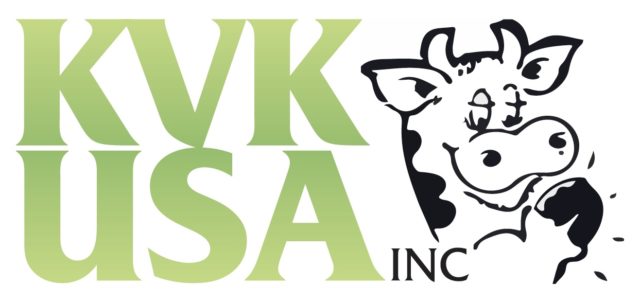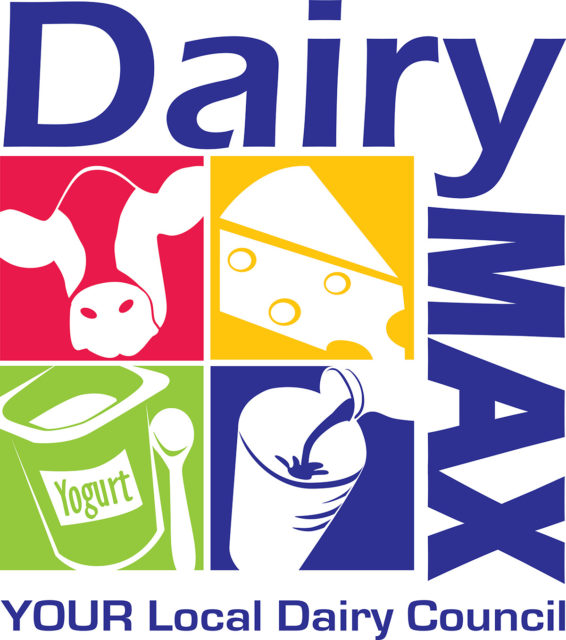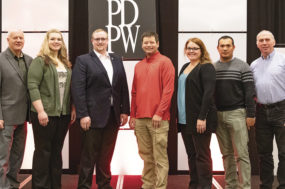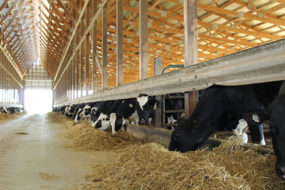I often get asked to consult with multi-partner farm businesses. When I ask the partners, “What are areas that need improvement?” the most common answer is “better communication.”
In most situations, the partners talk to each other frequently, often many times each day.
Why, then, do they indicate a need for “better communication?” What they typically mean is: There needs to be more communication on key farm business decisions, the communication needs to be more in-depth, and all partners need to be a part of the conversation.
The frequency of the “better communication” need is symptomatic of two important characteristics of a business with more than one partner – a business that is operating as a partnership. (The legal structure may or may not be a partnership.) The two are:
- Being a great partner is not easy.
- Making decisions in a partnership is very different from a single owner making final decisions.
Looking in-depth at the second point is crucial to improving partner communication. The key to understanding the challenges and opportunities of multiple owners lies in how decisions are made.
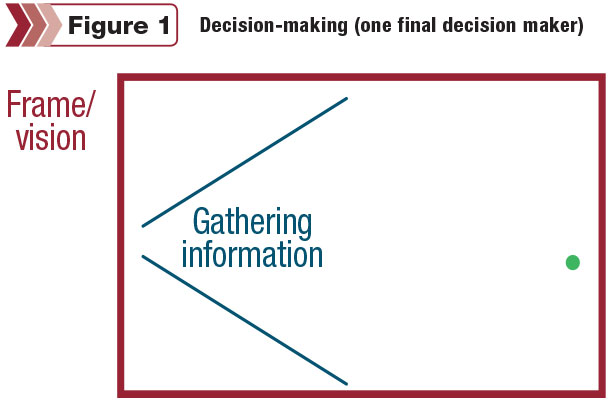 To understand this difference, we begin with a diagram (Figure 1) of decision-making when one individual makes the final decision.
To understand this difference, we begin with a diagram (Figure 1) of decision-making when one individual makes the final decision.
Note the following in the figure:
- The solid red rectangle represents what is called the frame for the decision. This is the criteria used to make the decision. For a farm business, the frame is the vision the owner has for the business.
- The blue lines represent collecting and analyzing information. Good single decision-makers collect information from many people including their employees, family members and trusted advisers.
- The green dot represents the decision that is made by the single decision-maker. When he or she has collected sufficient information, she or he makes the decision.
The last point is key. In most farm partnerships, the senior generation has operated as the single owner for many decades. He or she is very accomplished with this process.
Now think about what partners expect in a partnership. A partner expects to be a part of reaching the decision; however, in the above diagram, the single partner made the decision.
If one individual, often the senior partner, continues to operate using the above diagram, how will the other partners feel? The answer often includes frustration, even anger, because they are not included in reaching a decision. They often now ask for “better communication.”
To understand decision-making in a partnership requires expanding our diagram as shown in Figure 2.
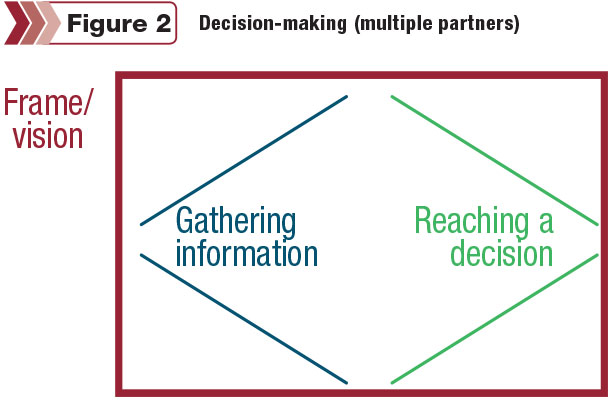 The diagram is the same – with the exception that the green dot has been replaced by the green lines that represent a collaborative discussion leading to a decision.
The diagram is the same – with the exception that the green dot has been replaced by the green lines that represent a collaborative discussion leading to a decision.
Instead of one individual collecting information and making a decision, all of the partners are now involved in a process leading to a decision – hopefully, a much better decision. In this process, all partners are involved in both analyzing information and reaching a decision.
When partners discuss their desire for “better communication,” they often express the desire that all partners “get along.” I am all in favor of “getting along,” but the potential of a partnership requires more than “getting along.”
The power of a partnership is in synergy. Synergy means that one plus one is greater than two; the partners together accomplish far more than they could as individuals. I find there are three keys to a successful, synergistic partnership – vision, collaborative leadership and structure.
In the figures, the red rectangle represents the vision of the business. With a single decision-maker, he or she utilizes this vision to make decisions. With multiple decision-makers, partners, each will use their vision to evaluate alternatives and reach their preferred decision.
Only when the multiple decision-makers have a common vision can they effectively discuss alternatives and reach a great decision that can be supported by all partners.
The second key to a successful, synergistic partnership is leadership. Typically, the individual who was the sole decision-maker becomes the senior partner. Usually, this makes him or her the individual leading the partnership.
Leading partners is very different from operating as a sole decision-maker. It is very easy, almost instinctive, for this leader to use the first decision-making process. He or she has been operating that way often for decades.
To change to effectively involve all partners requires first understanding the need for the “making a decision” component added in the second diagram and then developing the skills needed to effectively lead collaborative decision-making.
Leading collaborative, synergistic team decision-making requires the leader to focus on getting everyone’s ideas and insights and then guiding the team to a decision that everyone supports.
Discussion and even debate are not just encouraged; they are required for synergy. One of my favorite quotes, often attributed to Henry Ford, is, “If two people on a team always agree, one of them is not needed.”
Successful collaborative, synergistic decision-making requires some structure, typically including meetings. This is the third key. The need for structure is threefold:
- Getting together is the only way to ensure that all partners are involved in both “gathering information” and “reaching a decision.”
- The benefits of team decision-making accrue from the discussion and debate that can only occur when partners are together.
- The greatest benefits from collaboration and synergy accrue when problems are addressed proactively rather than reactively. Proactively addressing issues requires the structure that comes with having meetings with well-thought-out agendas.
Only a small proportion of the decisions made on a farm or agribusiness should be addressed by the partner team. Most decisions will be made by the individual responsible for that component of the business.
Strategic, policy and other crucial decisions should be addressed by the team of partners – the leadership team. One of the greatest challenges for this team is delineating what items should be on the agenda for the leadership team. PD
For assistance with leadership team – partner – decision-making, including templates for agendas and team operating rules, please contact me by email or call (651) 647-0495.
Click here to view a video to share with your partners on team decision making.

-
Bob Milligan
- Senior Consultant
- Dairy Strategies LLC
- Email Bob Milligan

